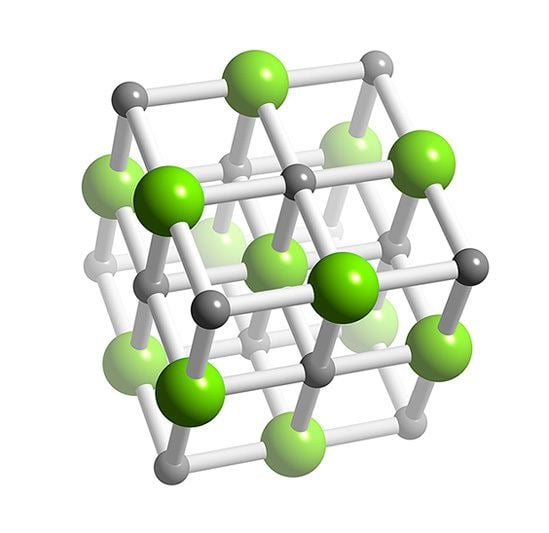Formula LiCl Melting point 605 °C Density 2.07 g/cm³ | Molar mass 42.394 g/mol Boiling point 1,382 °C | |
 | ||
Appearance white solidhygroscopic, sharp Thermodynamicdata Phase behavioursolid–liquid–gas Similar Potassium chloride, Strontium chloride, Lithium bromide | ||
Lithium chloride
Lithium chloride is a chemical compound with the formula LiCl. The salt is a typical ionic compound, although the small size of the Li+ ion gives rise to properties not seen for other alkali metal chlorides, such as extraordinary solubility in polar solvents (83.05 g/100 mL of water at 20 °C) and its hygroscopic properties.
Contents
Lithium chloride
Chemical properties
The salt forms crystalline hydrates, unlike the other alkali metal chlorides. Mono-, tri-, and pentahydrates are known. The anhydrous salt can be regenerated by heating the hydrates. Molten LiCl hydrolyzes to give LiOH and HCl. LiCl also absorbs up to four equivalents of ammonia/mol. As with any other ionic chloride, solutions of lithium chloride can serve as a source of chloride ion, e.g., forming a precipitate upon treatment with silver nitrate:
LiCl + AgNO3 → AgCl + LiNO3Preparation
Lithium chloride is produced by treatment of lithium carbonate with hydrochloric acid. It can in principle also be generated by the highly exothermic reaction of lithium metal with either chlorine or anhydrous hydrogen chloride gas. Anhydrous LiCl is prepared from the hydrate by heating with a stream of hydrogen chloride.
Uses
Lithium chloride is mainly used for the production of lithium metal by electrolysis of a LiCl/KCl melt at 450 °C (842 °F). LiCl is also used as a brazing flux for aluminium in automobile parts. It is used as a desiccant for drying air streams. In more specialized applications, lithium chloride finds some use in organic synthesis, e.g., as an additive in the Stille reaction. Also, in biochemical applications, it can be used to precipitate RNA from cellular extracts.
Lithium chloride is also used as a flame colorant to produce dark red flames.
Lithium chloride is used as a relative humidity standard in the calibration of hygrometers. At 25 °C (77 °F) a saturated solution (45.8%) of the salt will yield an equilibrium relative humidity of 11.30%. Additionally, lithium chloride can itself be used as a hygrometer. This deliquescent salt forms a self solution when exposed to air. The equilibrium LiCl concentration in the resulting solution is directly related to the relative humidity of the air. The percent relative humidity at 25 °C (77 °F) can be estimated, with minimal error in the range 10–30 °C (50–86 °F), from the following first order equation: RH=107.93-2.11C, where C is solution LiCl concentration, percent by mass.
Molten LiCl is used for the preparation of carbon nanotubes, graphene and lithium niobate.
Precautions
Lithium salts affect the central nervous system in a variety of ways. While the citrate, carbonate, and orotate salts are currently used to treat bipolar disorder, other lithium salts including the chloride were used in the past. For a short time in the 1940s lithium chloride was manufactured as a salt substitute, but this was prohibited after the toxic effects of the compound were recognized.
